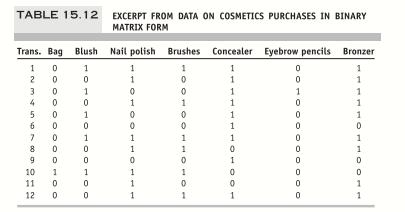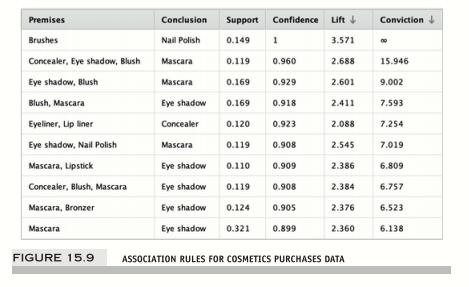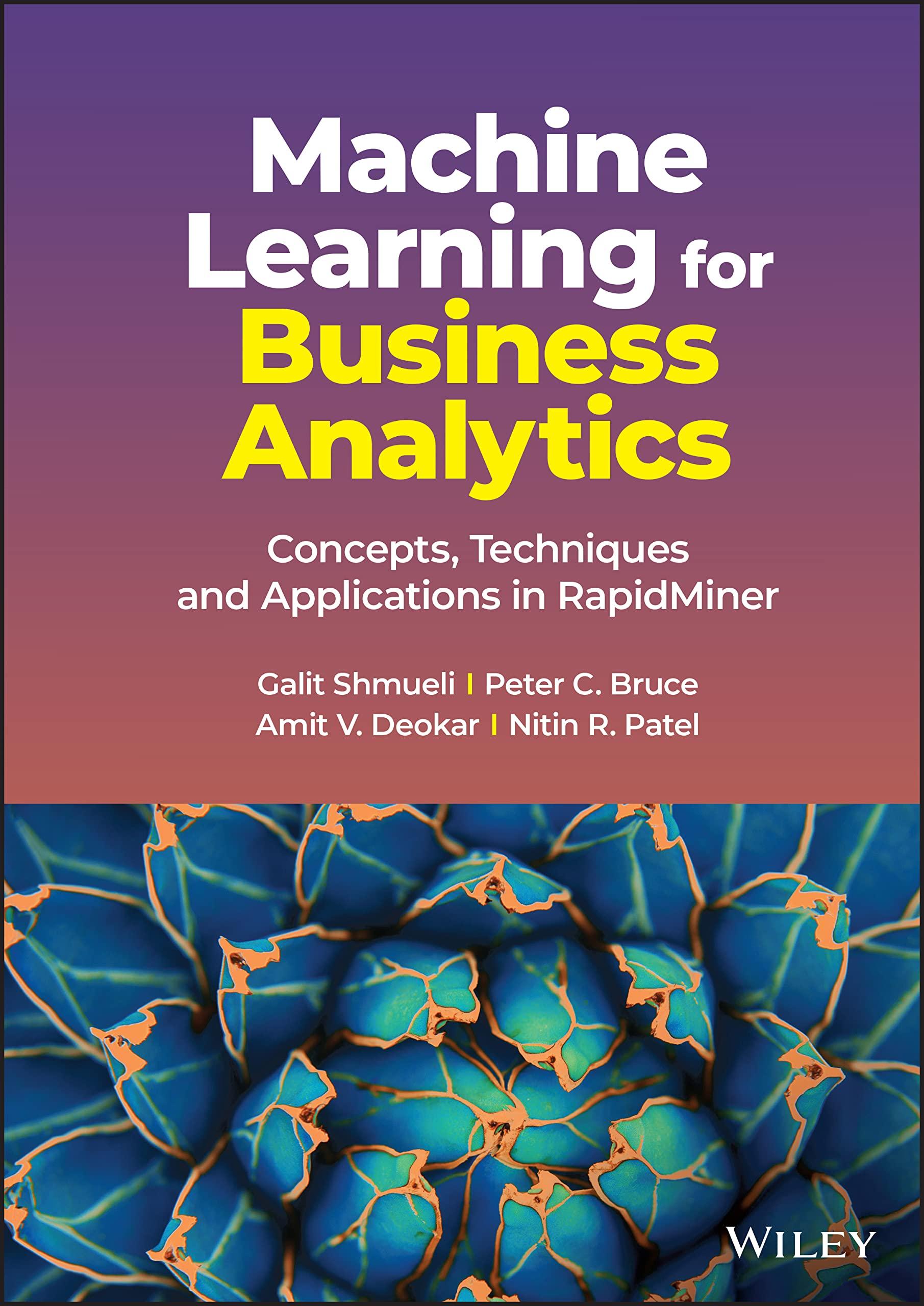Cosmetics Purchases. The data shown in Table 15 .12 and the output in Figure 15 . 9
Question:
Cosmetics Purchases. The data shown in Table 15 .12 and the output in Figure 15 . 9 are based on a subset of a dataset on cosmetic purchases (Cosmetics.csv) at a large chain drugstore. The store wants to analyze associations among purchases of these items for purposes of point-of-sale display, guidance to sales personnel in promoting cross sales, and guidance for piloting an eventual time-of-purchase electronic recommender system to boost cross-sales. Consider first only the data shown in Table 15 .12, given in binary matrix form.

a. Select several values in the matrix and explain their meaning.
b. Consider the results of the association rules analysis shown in Figure 15 . 9.
i. For the second row, explain the “confidence” output and how it is calculated.
ii. For the second row, explain the “support” output and how it is calculated.
iii. For the second row, explain the “lift” and how it is calculated.
iv. For the second row, explain the “conviction” and how it is calculated.
v. For the second row, explain the rule that is represented there in words

c. Now, use the complete dataset on the cosmetics purchases (in the file Cosmetics.csv). Using RapidMiner, apply association rules to these data (for generating frequent itemsets with FP-Growth, use min support = 0.15, and uncheck the option find min number of item sets; for creating association rules, use min confidence = 0.5).
i. How many rules are generated? Sort the rules first by conviction and then by lift and show the first 10 rules with the premises and conclusion for each rule, as well as their support, confidence, lift and confidence values.
ii. Interpret the first three rules in the output in words.
iii. Reviewing the first couple of dozen rules, comment on their redundancy and how you would assess their utility.
Step by Step Answer:

Machine Learning For Business Analytics
ISBN: 9781119828792
1st Edition
Authors: Galit Shmueli, Peter C. Bruce, Amit V. Deokar, Nitin R. Patel





